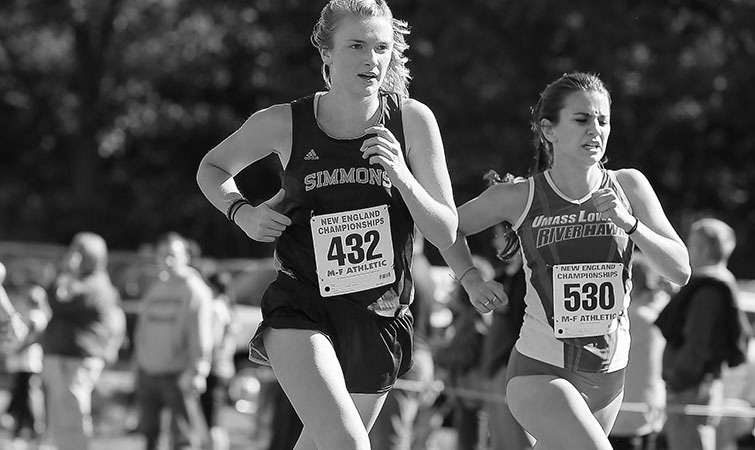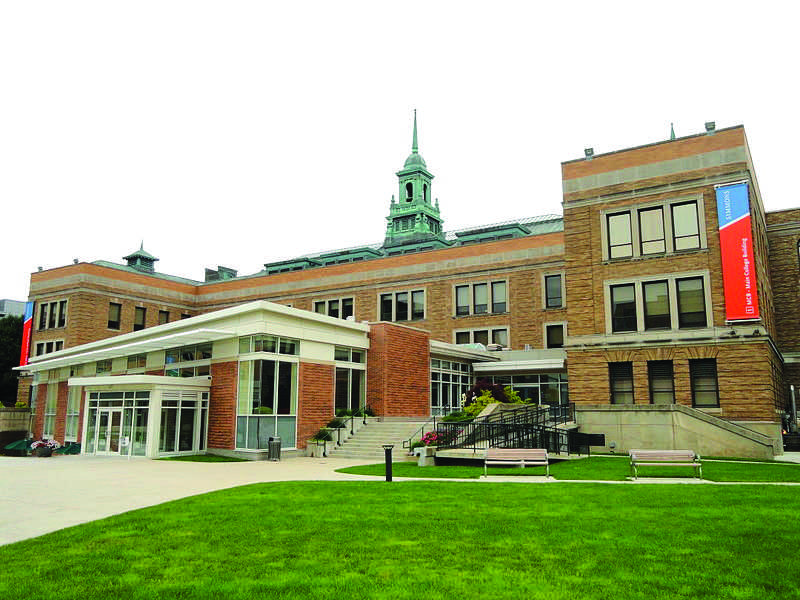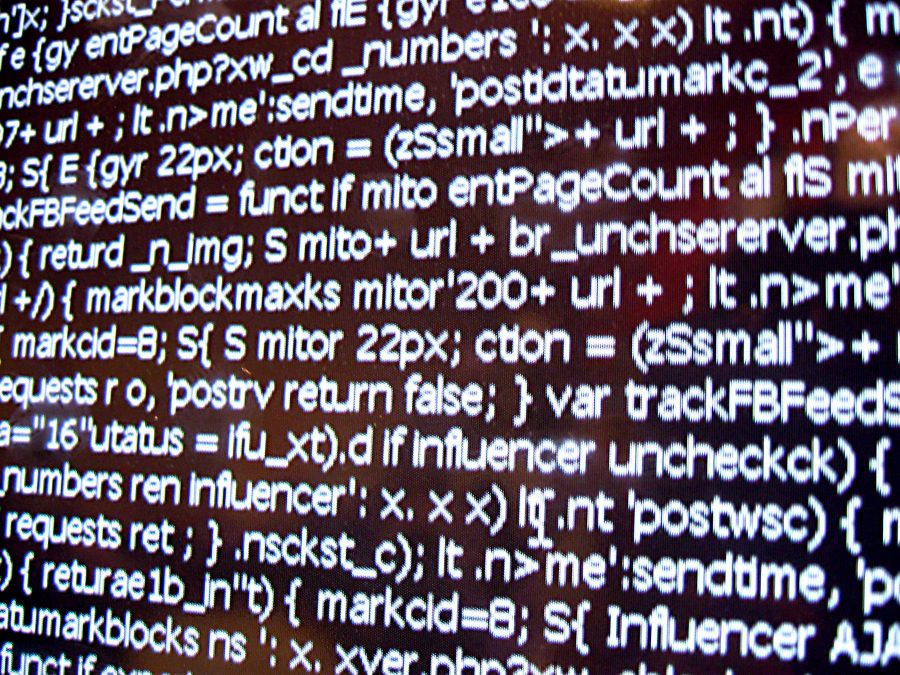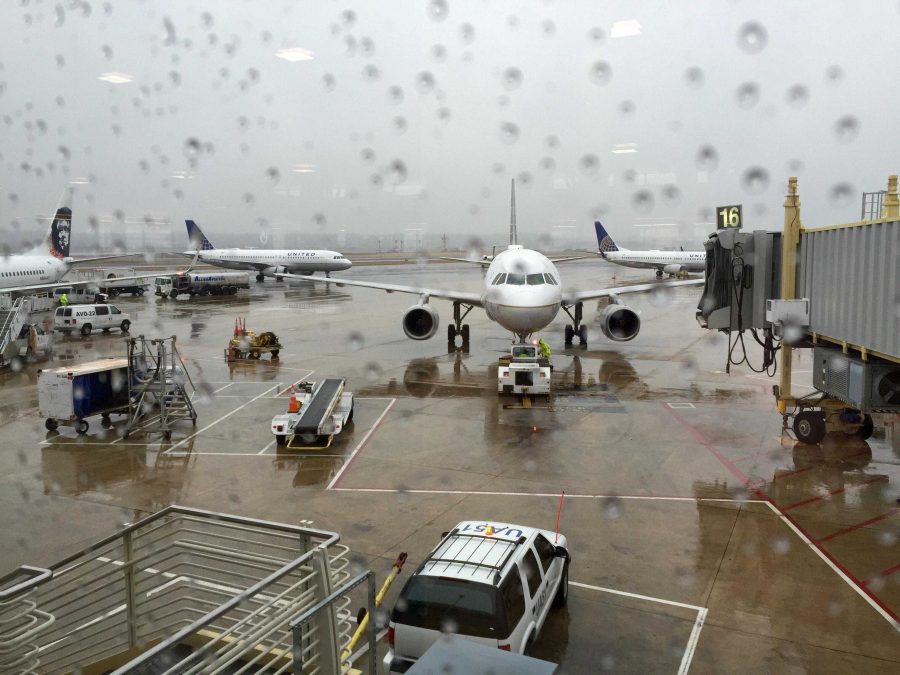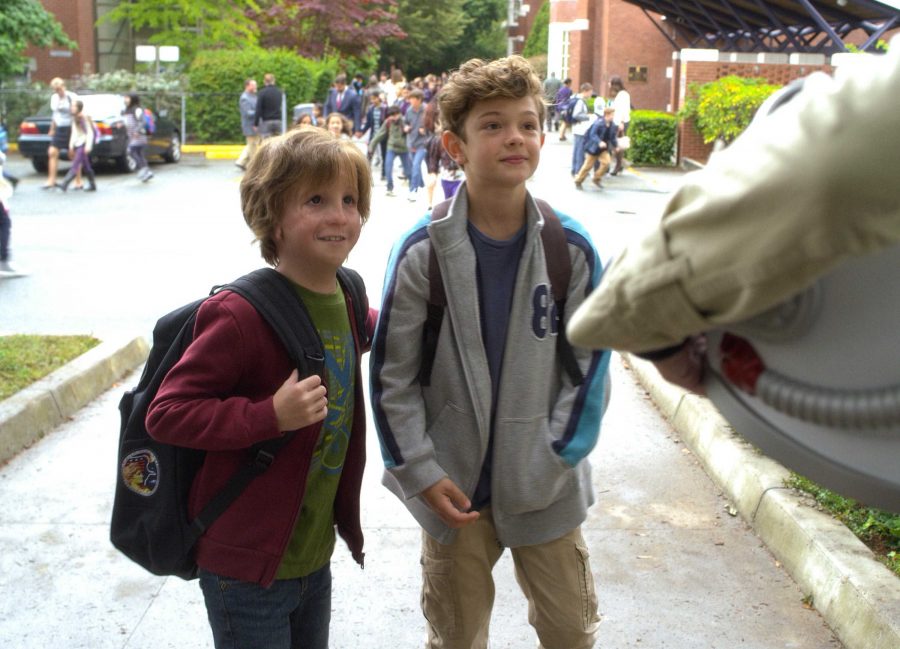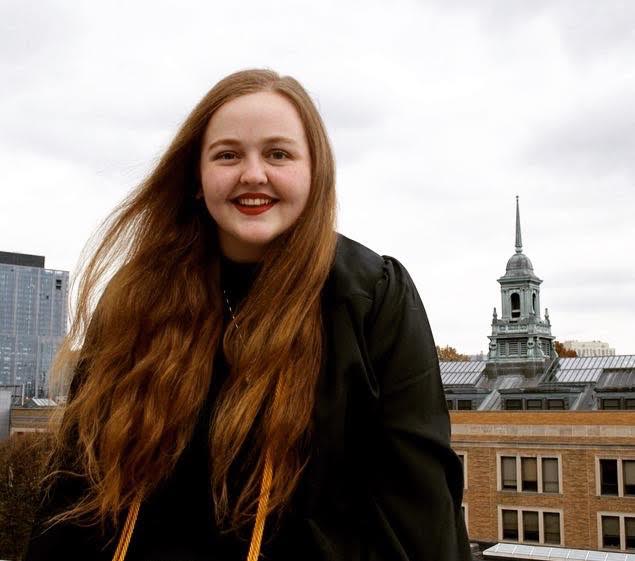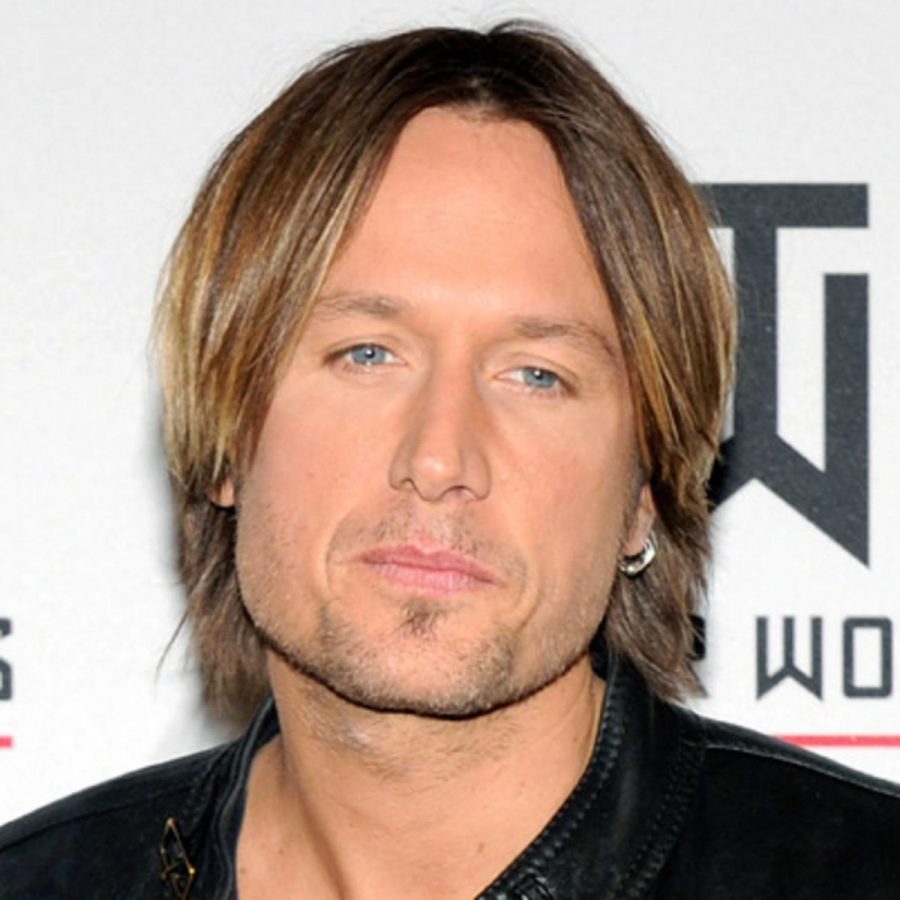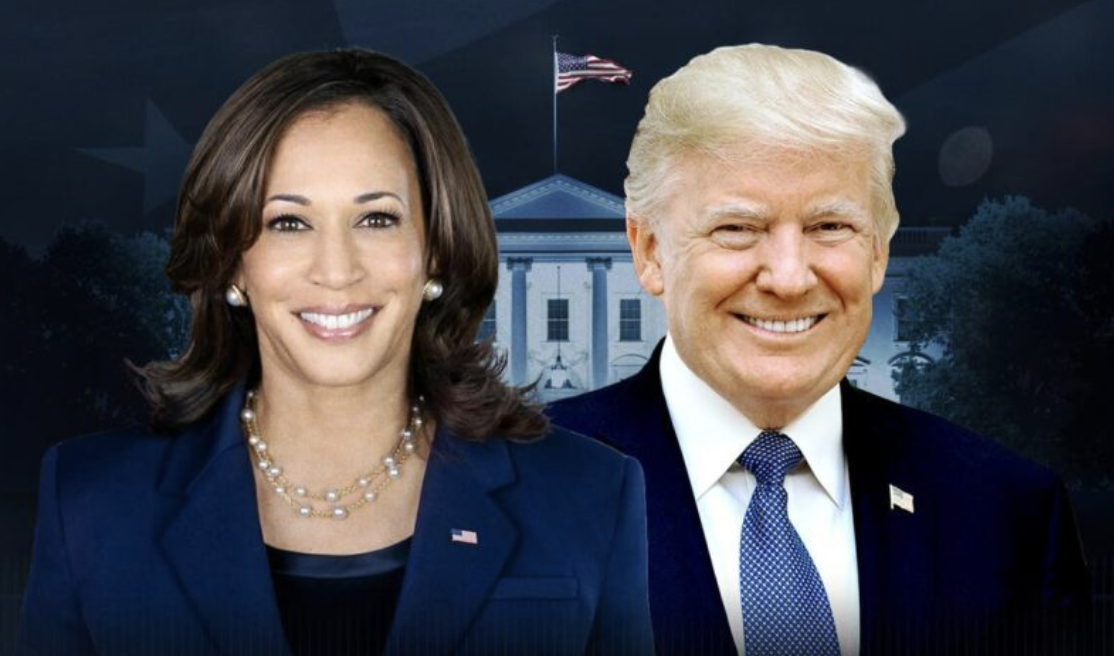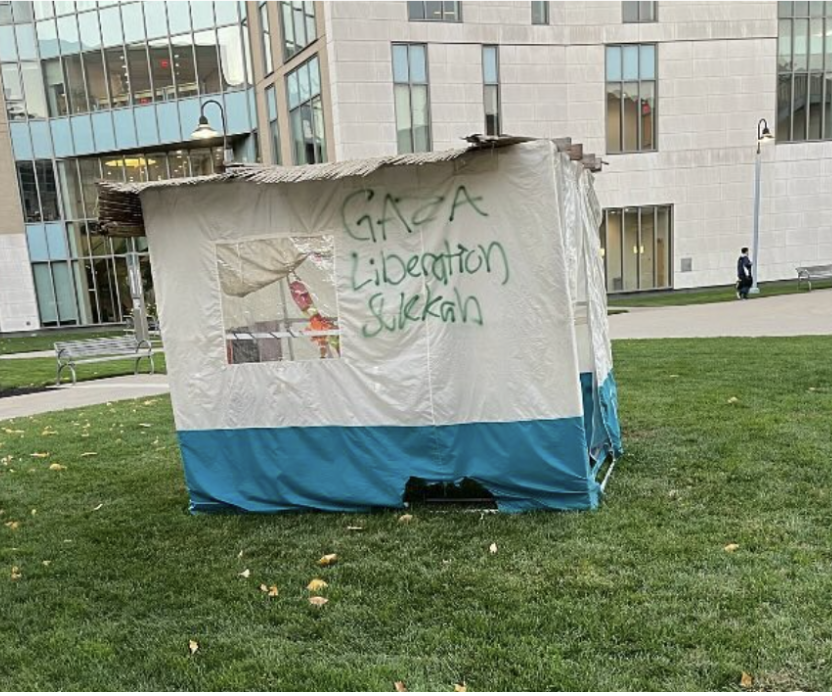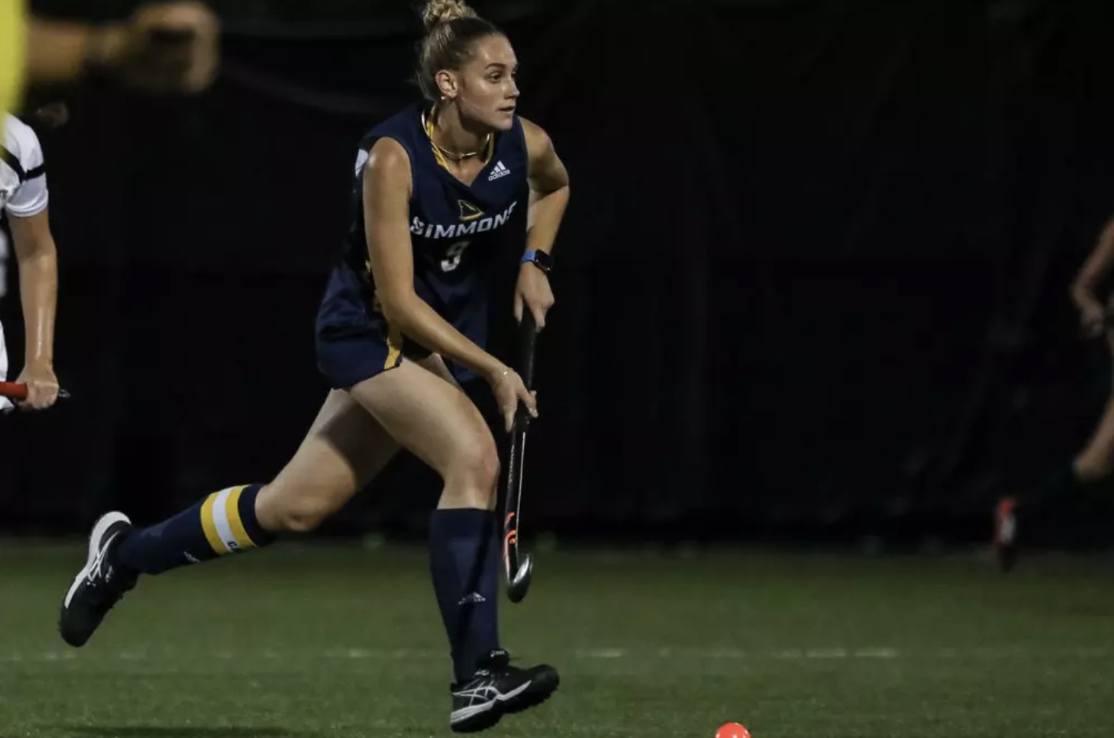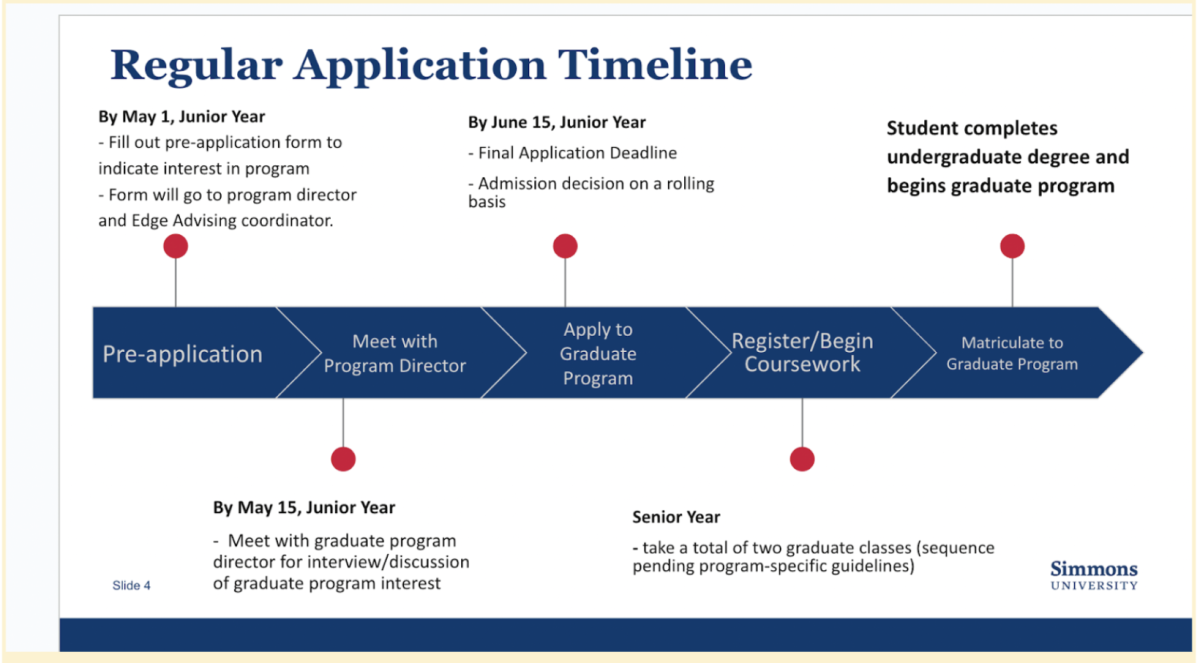By Lindsey Stokes
Staff Writer
Zenaida Peterson and her group of friends grew angry last Monday while watching St. Louis County, Missouri Prosecuting Attorney Robert Mucollugh announce the decision not to indict Officer Darren Wilson in the shooting death of Michael Brown.
“We were really upset about what we heard,” said Peterson, a Resident Advisor (RA) and active member of the Simmons community. “We knew we needed to do something.”
Each sent out ten text messages and before long 40 Simmons students stood in the residence quad. A number was written on the hand of every student “so we wouldn’t lose anyone,” said Peterson, as well as the telephone number of the American Civil Liberties Union (ACLU) so that in the event of an arrest, students would have resources available. The group walked together to the nearest MBTA station and boarded a train bound for Government Center.
At Government Center, the students chanted and sang, attracting attention from bystanders on the street, local media, and police.
The students then marched to the front steps of the Massachusetts State House where their small demonstration grew from 40 to over 100 people. According to Peterson, 10 Boston Police Officers stood as a human blockade on the front steps.
The group decided to break their circle formation, opting instead to look the officers in the eye as they sang and chanted “Hands up don’t shoot,” “This is what democracy looks like,” and “Black lives matter.”
During one of the organized 4.5 moments of silence, which represents the amount of hours Michael Brown’s body was left on the street after being shot, a man climbed the steps and attempted to shake the hand of every Boston Police Officer in the blockade, according to Peterson. One officer refused to shake his hand.
By 2 a.m. the train had stopped running for the night and the now 70 Simmons students decided to make the most of the opportunity.
“We announced that Simmons students were marching back to Simmons and anyone who wanted to join us was welcome to,” said Peterson. Along the way the 100 students and activists of the Fenway Area continued to chant and sing.
“There were people on the street that we passed who were really happy we were doing this,” said Peterson. “It was really powerful to have that many students out there.”
A recent Time Magazine poll reported that 48 percent of Americans approve of the grand jury decision in Ferguson, a statistic that, according to numerous students who took part in the protests, accurately reflects the Simmons community.
These same students report that many take this statistic to an extreme, uttering racially insensitive remarks about the grand jury decision, as well as the citizens of Ferguson verbally and on social media.
“This academic year has been very different for me,” said Simmons senior Sandy Lopes in a Letter to the Editor featured in this issue (p.11). “I have been very vocal about my thoughts and emotions regarding race, Simmons on race, and the ignorant and disrespectful comments that I have heard and seen walking the halls of Simmons, especially since it ‘prides itself on diversity and always keeps an open mind.’”
“In the political science department this is something that’s on everyone’s minds,” said Marissa Johnson, a senior and RA. “But I can’t say that is true for the entire Simmons community.” Though Johnson was unable to attend the demonstration on Monday, she attended a vigil on Tuesday and a march to South Bay that followed.
“For a lot of white students they have the privilege to just tune it out. That is white privilege,” said Johnson.
“I need some of these students at Simmons and the people of the outside community to look past their white privilege and dig deep down to see why people of color are outraged,” said Lopes. “I am tired of my brothers being described as ‘Black, 6’2, hoodie wearing and baggy pants saggin’.’ Tired of white people using the word ‘thug’ or ‘ghetto’ to describe my people. Tired of black boys not being able to look at officers in the eyes because they are viewed as ‘threatening.’ Tired of my brothers having to do a mental checklist of all the places they’ve been and the people who can corroborate their stories when a police officer walks in their direction.”
Peterson suggested those more informed on the affects of race and racism speak with others who may not understand to educate, and advise others on how both subjects should be discussed. “The best way to address this,” said Peterson, “is to talk to people face-to-face, not just comment on social media. We have to disrupt these notions.
“Simmons students were organized and we were peaceful,” said Peterson. “As a whole we were strong leaders on Monday and Tuesday.”
“We have to do better, said Lopes. “Instead of coming head-to-head about who is right and who is wrong, because to be honest, none of us were there to see what really happened, let’s come together to see what we can do to make a change. Monday night and Tuesday night were powerful and seeing people of different ages, different backgrounds, different races come together for the same cause was very emotional but the fight doesn’t stop there. Let’s use our energy to not make posts on social media but instead educate others about what is going on and work towards a better environment for the next generation and generations after that.”



